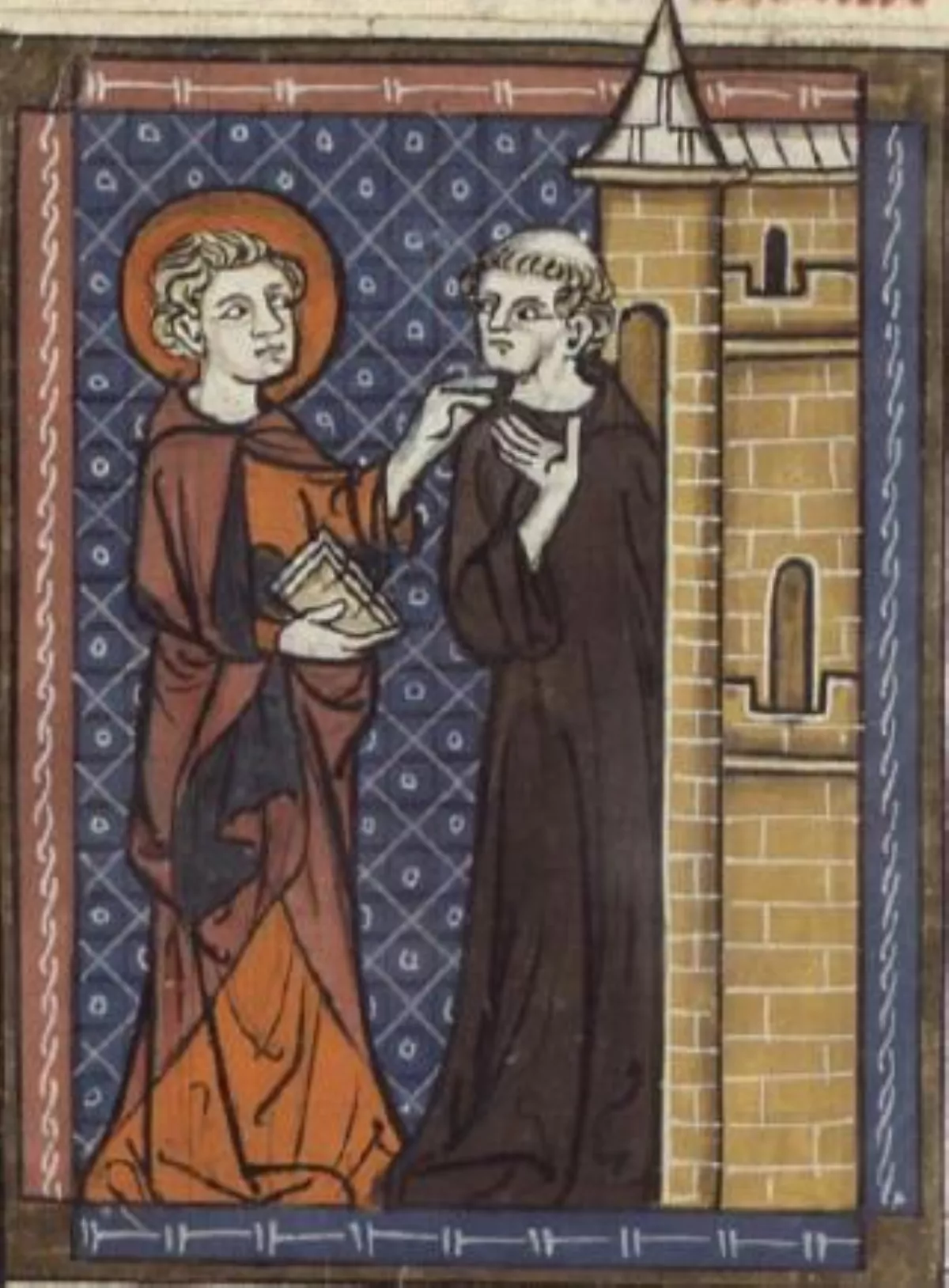 1.
1. Saint Fursey was an Irish monk who did much to establish Christianity throughout the British Isles and particularly in East Anglia.

 1.
1. Saint Fursey was an Irish monk who did much to establish Christianity throughout the British Isles and particularly in East Anglia.
Saint Fursey was born in the region of modern-day Connacht supposedly the son of Fintan and grandson of Finlog, pagan king of the area.
Saint Fursey's mother was Gelges, the Christian daughter of Aed-Finn, king of Connacht.
Saint Fursey was born probably amongst the Hy-Bruin, and was baptised by St Brendan the Traveller, his father's uncle, who then ruled a monastery in the Island of Oirbsen, now called Inisquin in Lough Corrib.
Saint Fursey was educated by St Brendan's monks, and when he became of the proper age he was inducted into the monastery at Inisquin, under the Abbot St Meldan, his "soul-friend", where he devoted himself to religious life.
Saint Fursey's great sanctity was early discerned, and there is a legend that here, through his prayers, twin children of a chieftain related to King Brendinus were raised from the dead.
Saint Fursey built his own monastery at Killursa outside the town of Headford in modern County Galway and he became the patron saint of the Parish of Headford.
Saint Fursey was said to have been something of an ascetic, wearing thin clothing year round.
Saint Fursey fell into a trance from the ninth hour of the day to cock-crow, and while in this state received the first of the ecstatic visions which have made him famous in medieval literature.
Saint Fursey was taken to the heavens by three angels who contended six times with demons for his soul.
Saint Fursey was the first recorded Irish missionary to Anglo-Saxon England.
Saint Fursey arrived in East Anglia with his brothers, Foillan and Ultan, during the 630s shortly before St Aidan founded his monastery on Holy Island.
When Fursey arrived with his brothers Foillan and Ultan, as well as other brethren, bearing the relics of Saints Meldan and Beoan, he had been welcomed by the king, who gave him land to establish an abbey at Cnobheresburg, where there was an abandoned Roman fort, traditionally identified with Burgh Castle in Norfolk.
Saint Fursey then retired for a year to live with Ultan the life of an anchorite.
Saint Fursey converted a robber, who had attacked the monks in a wood near Corbie, and his family through miracles.
Saint Fursey cured the inhospitable worldling Ermelinda, who had refused to harbour the weary travellers.
Saint Fursey's fame preceded him to Peronne, where he was joyfully received by Erchinoald, and through his prayers obtained the reprieve of six criminals.
Saint Fursey was offered any site in the king's dominions for a monastery.
Saint Fursey selected Latiniacum, close to Chelles and about six miles from Paris, a spot beside the Marne, at that time covered with shady woods and abounding in fruitful vineyards.
Saint Fursey's journeys continued and many churches in Picardy are dedicated to him.
Saint Fursey received some premonitions of his end, and set out to visit his brothers Foillan and Ultan who had by this time recruited the scattered monks of Cnobheresburg and re-established that monastery.
Saint Fursey died about 650 at Mezerolles while on a journey.
Saint Fursey was buried in a church in Peronne which has claimed him as patron ever since.
Many unusual events attended the transmission of his remains, and his body was eventually buried in the portico of the church of St Peter where Fursey had earlier placed the relics of Saints Meldan and Beoan.
Saint Fursey's body lay unburied for thirty days pending the dedication of the church, and was during that time visited by pilgrims from all parts, incorrupt and emitting a sweet odour.